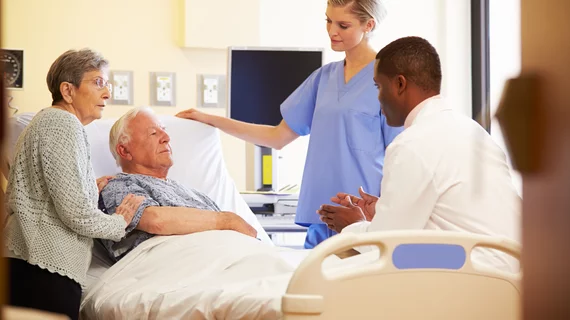Radiologists don’t see eye-to-eye with other providers on fluoroscopic swallow studies
Radiologists and speech-language pathologists have vastly different opinions and practice patterns for performing fluoroscopic studies in patients with swallowing problems, research published Wednesday suggests.
Dysphagia, or difficulty swallowing, affects nearly 1 in 25 Americans each year, with up to half of adults over 65 likely to suffer from the condition. Despite this, radiologists and language pathologists disagree on major aspects of videofluoroscopic swallow studies (VFSS).
Both provider groups did agree, however, that a standardized protocol for VFSS is needed, experts explained in Clinical Imaging. With an aging population and growing demand for such studies, the group hopes their conclusions can be used to promote more collaborative care strategies.
“These findings may be helpful for guiding interdisciplinary collaboration and improving patient outcomes, reducing hospital stay, and working towards reducing healthcare costs related to dysphagia,” Lauren Hermann, with Ideal Speech Solutions in Lewisburg Pennsylvania, and co-authors added.
For their findings, the team developed an online survey and administered it to members of the American Speech Language-Hearing Association’s swallowing disorders special interest group, along with professional radiology organizations, via social media. Overall, 447 clinicians responded, with 46 radiologists and 316 speech experts ultimately included.
Although the groups differed on nearly all questions, the authors chose to focus on four specific areas. The first showed radiologists were much more likely to suggest stopping a VFSS once a patient aspirated. Speech pathologists strongly disagree with this, and current guidelines from the American College of Radiology (ACR) also go against the rads’ opinions.
“If the study is stopped due to an aspiration event, the understanding of causation and the determination of preventative strategies are incomplete,” the authors noted.
Additionally, speech language pathologists often supported performing a routine esophageal sweep during video fluoroscopic swallow studies compared to radiologists. The sweep visualizes a problem in the context of the entire swallowing process and can result in more appropriate referrals to evaluate potential issues.
Radiologists support using a lower frame rate, likely due to potential radiation exposure during exams. However, Hermann et al. noted this risk is considered minimal.
Finally, speech language pathologists favored capturing an AP view throughout a study. Standard protocols recommend obtaining this projection to further assess potential abnormalities and enhance referrals, the authors noted.
“Our hope is that this study can promote awareness of guidelines from national organizations and tools … which can improve patient care by offering a more comprehensive assessment beyond simply the presence or absence of aspiration, and assist clinicians as they establish a patient's baseline within the larger framework of a treatment algorithm,” the team concluded.
To read about the study's limitations and more results click here.

